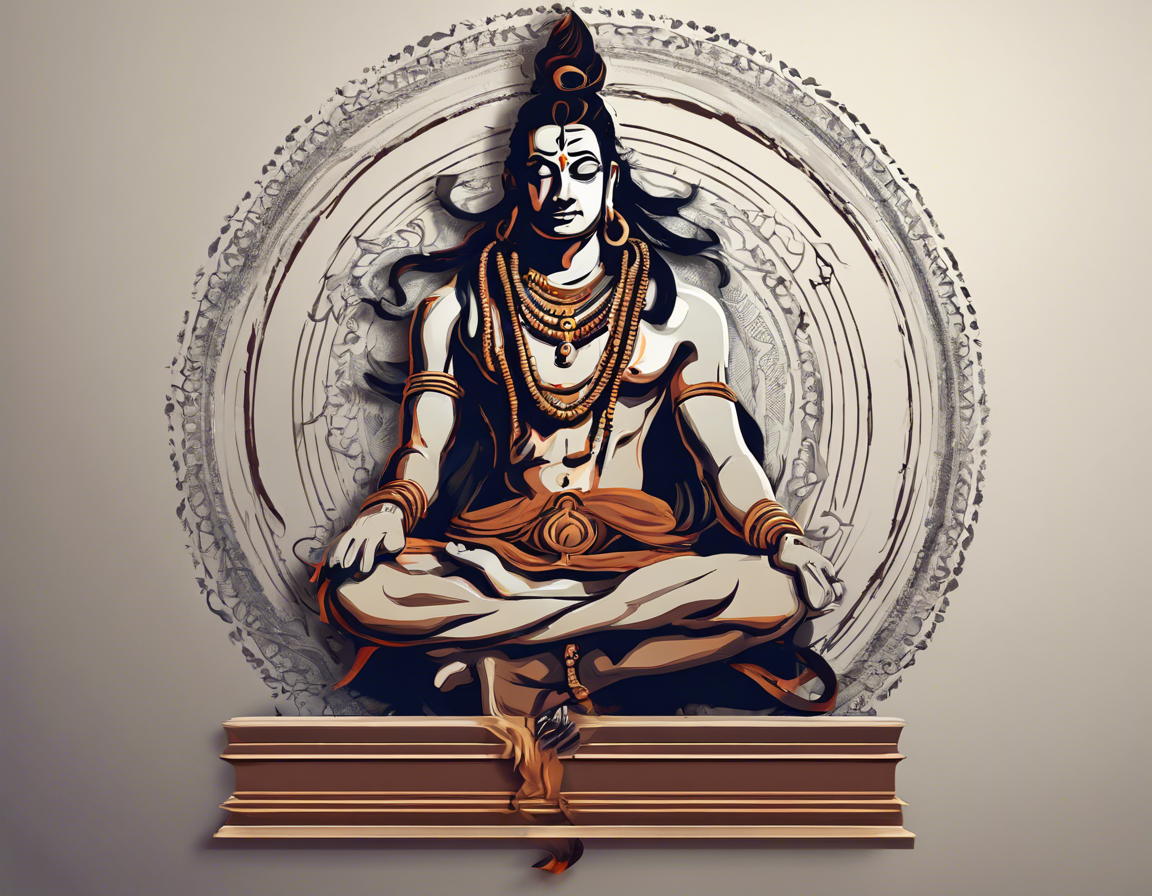In the rich tapestry of Hindu mythology, Lord Shiva, also known as Mahadev, occupies a central and revered position. As the destroyer in the trinity of Brahma the creator, Vishnu the preserver, and Shiva the destroyer, Mahadev embodies the cyclical nature of existence and the transformative power of destruction and renewal. This article delves into the mysteries and symbolism surrounding this enigmatic deity, shedding light on his various facets and manifestations.
The Origins of Mahadev
According to Hindu mythology, Mahadev has no beginning or end; he is eternal and represents the infinite nature of the universe. He is often depicted as the ascetic yogi meditating in the Himalayas, immersed in profound contemplation. Shiva is also associated with the divine dance of creation and destruction, known as the Tandava, which symbolizes the cosmic cycles of birth and death.
The Consort of Shiva
One of the most well-known aspects of Shiva is his relationship with his consort, Parvati. She is the embodiment of Shakti, the divine feminine energy that complements Shiva’s masculine energy. Together, they represent the harmonious union of opposites and the balance of yin and yang, symbolizing the interconnectedness of all dualities in the universe.
Symbolism and Iconography
Mahadev is often depicted with various symbolic elements, each carrying deep spiritual significance. The trident (trishul) represents the three gunas (qualities) of Satva, Rajas, and Tamas, as well as the past, present, and future. The serpent around his neck symbolizes his mastery over fear and death, while the third eye on his forehead signifies his inner wisdom and insight beyond the physical realm.
Manifestations of Shiva
Shiva has multiple manifestations, each representing different aspects of his divine nature. Rudra is the fierce form of Shiva, associated with storms and destruction, while Natraj is the cosmic dancer whose rhythmic movements create and destroy the universe. Ardhanarishvara is the androgynous form of Shiva, symbolizing the union of male and female energies in one being.
Worship and Rituals
Devotees of Shiva engage in various forms of worship and rituals to seek his blessings and protection. Maha Shivaratri is a major Hindu festival dedicated to Shiva, where devotees observe fasts, perform prayers, and offer milk, water, and bael leaves to his symbolic representation. Rudrabhishekam is a powerful ritual where Shiva is bathed with various sacred substances, accompanied by Vedic chants and mantras.
The Significance of Mount Kailash
Mount Kailash, located in Tibet, is believed to be the abode of Shiva, where he resides in a state of perpetual meditation. Pilgrims undertake arduous journeys to circumambulate the sacred mountain, believing that it bestows spiritual merit and blessings. The ancient texts describe Mount Kailash as the cosmic axis or center of the universe, connecting the earthly realm with the divine realms.
The Philosophy of Shiva
Shiva is not just a mythical figure but also a philosophical concept that embodies profound spiritual teachings. His formless nature signifies the ultimate reality beyond all forms and attributes. Shiva Shakti Aikya, the oneness of Shiva and Shakti, represents the unity of consciousness and energy, emphasizing the inseparable relationship between the individual self and the universal consciousness.
FAQs – Unveiling the Mysteries of Mahadev:
1. Who is Mahadev in Hindu mythology?
Mahadev is another name for Lord Shiva, one of the principal deities in Hinduism known as the destroyer in the trinity of gods.
2. What is the significance of Shiva’s third eye?
Shiva’s third eye symbolizes spiritual insight, wisdom, and the destruction of ignorance and illusions.
3. How is Mahadev worshipped in Hindu rituals?
Devotees worship Mahadev through rituals such as abhishekam (ritual bathing), offering bilva leaves, and chanting mantras in his praise.
4. What is the symbolism of Shiva’s trident (trishul)?
The trident represents the three aspects of existence – creation, preservation, and destruction – as well as Shiva’s control over the three gunas.
5. Why is Mount Kailash considered sacred in Hinduism?
Mount Kailash is believed to be the earthly abode of Lord Shiva, a sacred site where spiritual seekers undertake pilgrimages to seek his blessings.
6. What are the different forms or manifestations of Shiva?
Shiva has many forms, including the fierce Rudra, the cosmic dancer Natraj, and the androgynous Ardhanarishvara, each symbolizing different aspects of his divine nature.
7. How does Mahadev symbolize the cyclical nature of life and death?
Through his role as the destroyer in the trinity, Shiva represents the inevitability of death as a necessary precursor to rebirth and renewal.
8. What teachings does Shiva’s philosophy impart to his devotees?
Shiva’s philosophy emphasizes the impermanence of material existence, the importance of inner transformation, and the unity of the individual soul with the universal consciousness.
9. How does Parvati complement Shiva’s energy in Hindu mythology?
Parvati, as Shiva’s consort, embodies the divine feminine energy Shakti, symbolizing the nurturing, creative force that balances Shiva’s destructive aspect.
10. What is the significance of Shiva’s serpent and the crescent moon on his head?
The serpent symbolizes Shiva’s mastery over fear and ego, while the crescent moon represents the cycles of time and the waxing and waning of the cosmic energies.
In conclusion, the figure of Mahadev transcends mere myth and legend; it encapsulates profound spiritual truths and timeless wisdom that continue to inspire and guide seekers on the path of self-realization and enlightenment. Through his various forms, symbols, and teachings, Mahadev invites us to contemplate the deeper mysteries of existence and the eternal dance of creation and destruction that underlies all of creation.
